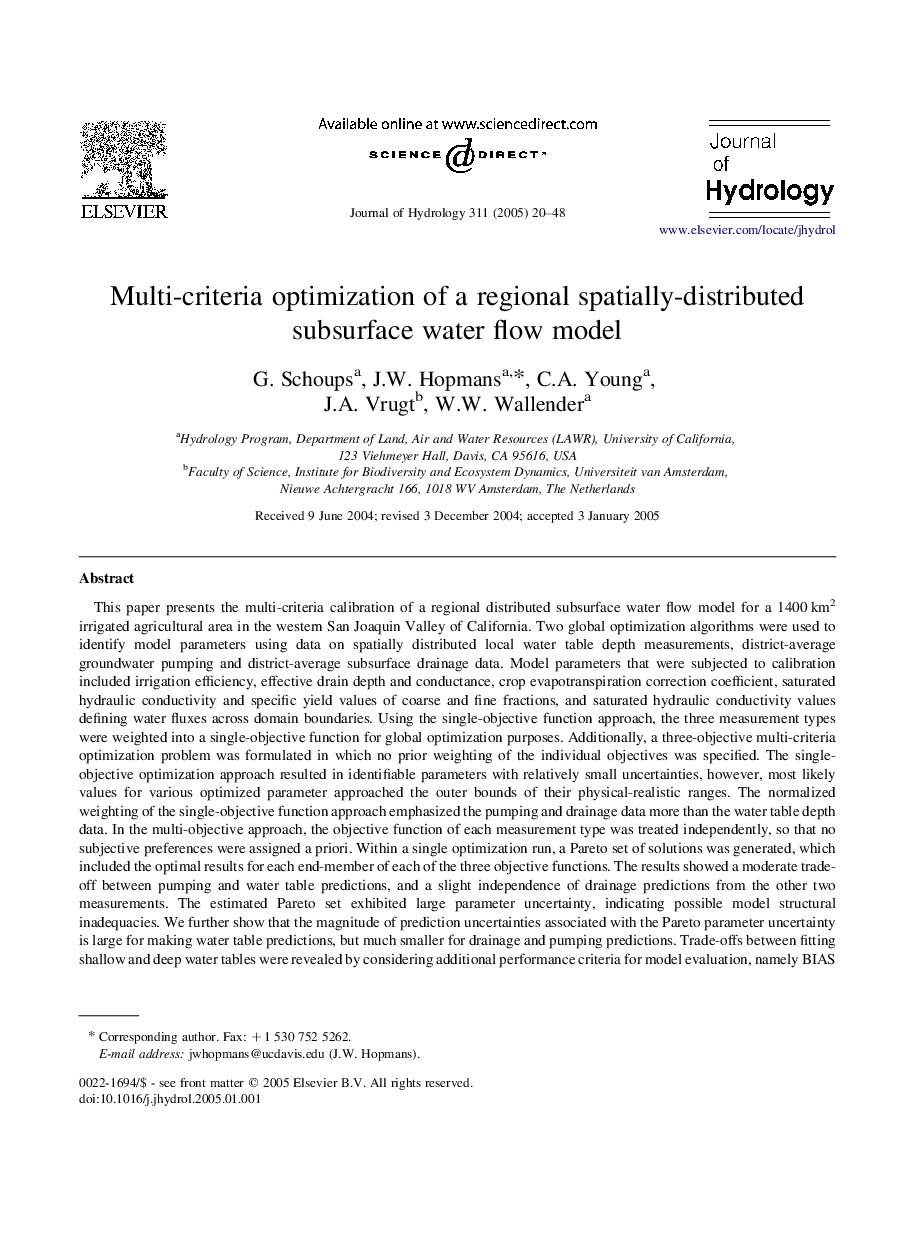| Article ID | Journal | Published Year | Pages | File Type |
|---|---|---|---|---|
| 9491331 | Journal of Hydrology | 2005 | 29 Pages |
Abstract
This paper presents the multi-criteria calibration of a regional distributed subsurface water flow model for a 1400Â km2 irrigated agricultural area in the western San Joaquin Valley of California. Two global optimization algorithms were used to identify model parameters using data on spatially distributed local water table depth measurements, district-average groundwater pumping and district-average subsurface drainage data. Model parameters that were subjected to calibration included irrigation efficiency, effective drain depth and conductance, crop evapotranspiration correction coefficient, saturated hydraulic conductivity and specific yield values of coarse and fine fractions, and saturated hydraulic conductivity values defining water fluxes across domain boundaries. Using the single-objective function approach, the three measurement types were weighted into a single-objective function for global optimization purposes. Additionally, a three-objective multi-criteria optimization problem was formulated in which no prior weighting of the individual objectives was specified. The single-objective optimization approach resulted in identifiable parameters with relatively small uncertainties, however, most likely values for various optimized parameter approached the outer bounds of their physical-realistic ranges. The normalized weighting of the single-objective function approach emphasized the pumping and drainage data more than the water table depth data. In the multi-objective approach, the objective function of each measurement type was treated independently, so that no subjective preferences were assigned a priori. Within a single optimization run, a Pareto set of solutions was generated, which included the optimal results for each end-member of each of the three objective functions. The results showed a moderate trade-off between pumping and water table predictions, and a slight independence of drainage predictions from the other two measurements. The estimated Pareto set exhibited large parameter uncertainty, indicating possible model structural inadequacies. We further show that the magnitude of prediction uncertainties associated with the Pareto parameter uncertainty is large for making water table predictions, but much smaller for drainage and pumping predictions. Trade-offs between fitting shallow and deep water tables were revealed by considering additional performance criteria for model evaluation, namely BIAS and RMSE values for six water table depth groups. These results point to possible model improvements by spatially distributing some of the model parameters.
Related Topics
Physical Sciences and Engineering
Earth and Planetary Sciences
Earth-Surface Processes
Authors
G. Schoups, J.W. Hopmans, C.A. Young, J.A. Vrugt, W.W. Wallender,
